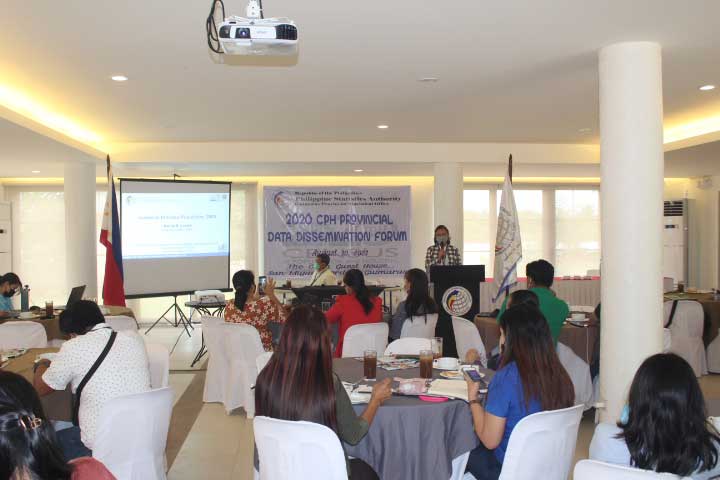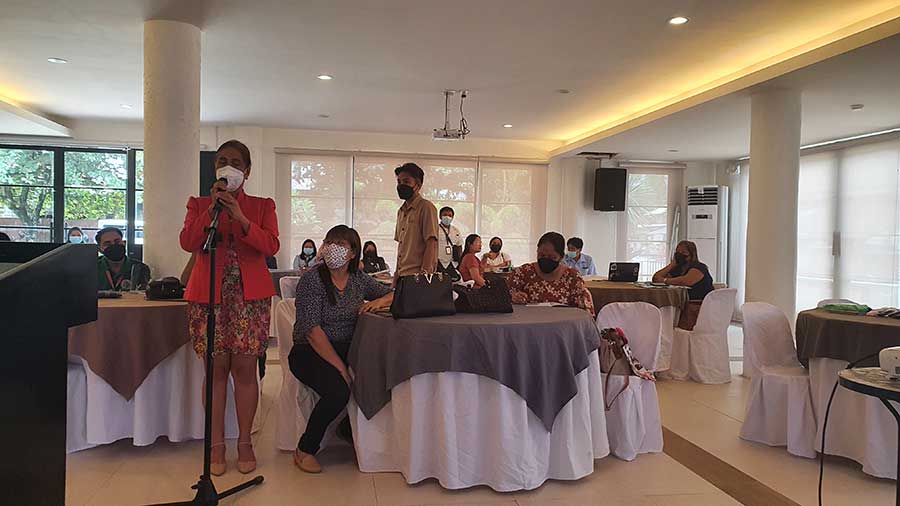
Apart from promoting public awareness, fostering understanding among stakeholders and data users, and providing the public with the 2020 Census of Population and Housing (2020 CPH) official result, conflicting issues on the population count released by the Philippine Statistics Authority (PSA) and Guimaras data gathered by Barangay Health Workers (BHWs), were also settled during the 2020 CPH Provincial Data Dissemination forum.
“The said Forum was conducted on August 10, 2021, to inform the public or the Guimarasnons of the results of the 2020 CPH population counts, and to promote the importance and relevance of the census data among stakeholders and data users, especially in the formulation of plans, policies, and programs which was discussed by the invited resource persons,” Provincial Statistics Officer Nelida B. Losare said.

“Likewise, the forum also served as the venue for discussion, clarification and resolving issues/concerns on the released data.”
The main issue raised by an Association of Barangay Captains (ABC) president was on the difference between the data generated/released by PSA and the local government unit’s (LGU) data gathered by the Barangay Health Workers (BHWs).
Losare then expounded that the PSA and the LGU data differed on the concepts used – the PSA is using an internationally approved concept and definition of terms so that released data would be comparable with that of other countries that also uses the same concepts, which primarily eliminates double-counting.
“If the BHWs will use the same concepts then there will be no difference on the population count,” she said.

“It was also clearly explained in the presentation of Mr. Vicente Geonanga, Supervising Statistical Specialist (SSS), that all living persons as of 12:01 a.m. of 1 May 2020, specifically, those who are permanently residing in the Philippines; who, as of 1 May 2020, is temporarily on vacation or business/pleasure trip somewhere in the Philippines and is expected to be back within six (6) months from the date of departure were included in the listing,” Losare added.
Losare also highlighted that those working or attending school outside their usual place of residence but usually come home at least once a week was also included, while those who do not go home at least once a week will be counted in their temporary residence.
Representative from the Local Government Unit (LGU) of Jordan Municipality also confirmed that he was once an enumerator, and he understands the difference in the concept used by the BHWs.

“They are maintaining a ledger with the master lists of all family members that even if they worked in Manila or outside the province and do not go home for a long time, they are still counted, and at the time of the census are probably counted in their temporary residence which may result to double-counting,” Jordan Municipal Planning Development Office Statistician I Renante B. Baleña said.
The ABC President also asked during the open forum which data on population between PSA and BHWs should be used, since the data of BHWs is annually monitored while data of PSA is updated every 5-year.
“It is the mandate of the PSA to generate critical data for decision-making of the government and the private sector, PSA is the official source of population count, I am encouraging everybody to use it over the BHW’s data,” Losare said.

“In the absence of PSA data for the non-census years, you may use LGU data for your internal consumption only but, it would be better if the BHWs will adopt the PSA’s concepts and methodology in generating population count,” she added.
Governor Samuel T. Gumarin also supported the activity where he highlighted the importance of population data for the Local Chief Executives’ (LCEs’) decision-making during his message. Likewise, he was thankful that the result of the 2020 CPH was released on time amidst the COVID-19 pandemic.
After the welcome remarks from the Governor, Geonanga presented the background and the methodology for the 2020 CPH survey to give the participants an overview of how the survey was conducted and what was not included in the population count while PSO Losare presented the highlights of the 2020 CPH for Guimaras province.
“The population count in 2020 reached 187,842 persons, higher by 13,229 individuals compared to the 174,613-population recorded in 2015, posting a 1.55% population growth rate (PGR) for a span of five (5) years (2015-2020), the figure is the second-highest growth rate of the Province registered from 1990, next to the 2.43% PGR recorded in 2000,” Losare said.
Losare also discussed that the slowest population growth of the province was registered in 2000-2007 at 0.93 percent (for a gap of 7 years), followed by the growth rates in 1990-1995 at 1.31% and 2010-2015 at 1.33 percent.
“Based on the 2020 CPH, Guimaras got the least population among the five provinces in Region VI in terms of number, but its population growth from 2015 to 2020 outpaced the other provinces,” Losare said.
She also expounded during her presentation that the population density or the crowdedness of the population in the island province was recorded at 311 persons per square kilometer, while the population density in 2020 recorded an increment of 22 persons per square kilometer, from the 289 persons per square kilometer in 2015.
“The PSA- Guimaras truly appreciated the participation of everybody that led to the successful conduct of the 2020 CPH data dissemination forum and the attainment of its objectives,” Losare said.






















